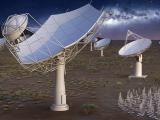Archivo de noticias y eventos
901 - 950 de un total de 2402
También puede acceder a la lista de noticias publicadas en los medios relacionadas con el Instituto de Astrofísica de Andalucía - CSIC.
Pages

|
13/04/2018 - 12:30
Observatorio Astrofísico de Javalambre: a dedicated facility for large sky surveys The Observatorio Astrofísico de Javalambre (OAJ) is an astronomical infrastructure conceived to carry out large sky, multi-filter astronomical surveys from the Northern hemisphere. It is fundamentally structured around two large field-of-view (FoV) telescopes and their corresponding panoramic instrumentation for direct imaging. OAJ main telescopes are the Javalambre Survey Telescope (JST/T250), a 2.55m telescope with a FoV of 3 deg diameter, and... Dr. Antonio Marín-Franch |

|
21/03/2018 - 10:00
MEGARA @ GTC: performance review and commissioning results MEGARA, the optical multi-object spectrograph (MOS) for the GTC 10m telescope, has been developed by a Consortium whose partners are UCM, INAOE, IAA-CSIC and UPM. MEGARA has 2 observing modes on sky: (a) a central IFU 12.5” x 11.3” of 567 fibers, complemented with 8 x 7-fiber bundles for sky subtraction, and (b) a MOS mode with 92 robotic positioners, covering a total FoV of 3.5' x 3.5'. MEGARA provides intermediate-to-high spectral resolution (... Dr. Jorge Iglesia |

|
15/03/2018
Adiós a Stephen Hawking Despedimos al célebre físico recordando su visita al IAA entre el 21 y 28 de abril de 2001 |

|
21/06/2018 - 12:30
Blazar Science with POLAMI: Polarimetric Monitoring of AGN at Millimeter Wavelengths A pioneering long term program at the IRAM 30m Telescope dubbed POLAMI (Polarimetric Monitoring of AGN with Millimetre Wavelengths) observes the 4 Stokes parameters of the continuum emission at 3.5 and 1.3 mm, with a time sampling of ~2 weeks for the ~40 brighter sources in the northern sky. The XPOL polarimeter, connected to different heterodyne receiver sets, has been used since the beginning of our observations. In this talk I will introduce... Dr. Iván Agudo |

|
12/04/2018 - 12:30
The J-PAS and J-PLUS large sky surveys: an unprecedented view of the Universe in multi-colors The Observatorio Astrofísico de Javalambre (OAJ), managed and operated by the Centro de Estudios de Física del Cosmos de Aragón (CEFCA), is mostly devoted to conduct large sky multi-filter surveys with two large field of view telescopes of 2.5m and 80cm and their respective panoramic instrumentation. The main survey to be carried out in the next years is J-PAS (Javalambre Physics of the Accelerating Universe Astrophysical Survey). Conceived as a... Dr. Javier Cenarro |
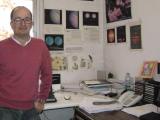
|
05/03/2018
Una investigación del IAA, premio Vanguardia de la Ciencia José Luis Ortiz, investigador principal del equipo que halló un anillo en torno al planeta enano Haumea, obtiene el galardón, concedido por primera vez a una investigación en astrofísica |

|
26/02/2018
De Mars Express a Exomars: una revisión completa del planeta rojo A la espera de los primeros datos procedentes de la misión ExoMars 2016 TGO de la Agencia Espacial Europea (ESA), expertos internacionales en el planeta rojo se reúnen en Madrid para revisar algunos desafíos actuales y prepararse para la llegada y la explotación científica de ExoMars |
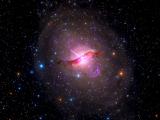
|
22/02/2018
POLAMI: un proyecto para desentrañar los secretos de los agujeros negros supermasivos de los núcleos galácticos Coordinado desde el IAA, agrupa a más de veinte investigadores de cinco países y constituye el primer proyecto de su tipo a largo plazo para el estudio los núcleos activos de galaxias en luz polarizada |
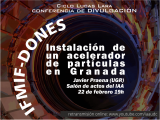
|
22/02/2018 - 19:00
IFMIF-DONES: instalación de un acelerador de partículas en Granada Granada podría ser sede de una de las instalaciones de física nuclear más singulares y avanzadas a nivel mundial. Esta instalación, IFMIF-DONES, tiene como objetivo final el análisis del comportamiento de materiales bajo condiciones extremas de irradiación de neutrones. Javier Praena |
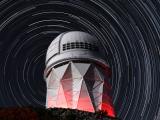
|
12/02/2018
Resolver el misterio de la energía oscura: una nueva misión para un telescopio de cuarenta y cinco años El telescopio Mayall, situado en el observatorio nacional de Kitt Peak (Arizona), se prepara para alojar a DESI, un instrumento para el estudio de la energía oscura y el universo a gran escala en el que participa el Instituto de Astrofísica de Andalucía |

|
05/04/2018 - 12:30
ESERO Spain, del espacio al aula Un proyecto de la ESA acogido en el Parque de las Ciencias para fomentar las vocaciones científico-tecnológicas en las primeras etapas educativas, haciendo uso del contexto del espacio. Manuel Roca & Domingo Escutia |

|
22/06/2018 - 12:30
What do environments can tell us about supernovae? The advent of Integral Field Spectroscopy (IFS) applied to supernova (SN) environmental studies have shown the potential of this technique to directly characterize the galactic environmental parameters at SN locations, compare them to those at different locations of the galaxy, and put constraints on progenitor stars for different SN types. Here, I will summarize past works and present ongoing efforts, including the PISCO compilation and the... Dr. Luis Galbany |

|
22/03/2018 - 12:30
Carbon Chemistry in Carbon-rich AGB stars The chemistry of carbon in evolved stars will be discussed from the observational and chemical modelling point of view. From the photosphere of the central star to the external layers of the circumstellar envelope different chemical processes allow the formation of different carbon molecules, among them carbon clusters and carbon chain radicals. The chemistry if not completely understood as many reactions are involved in the formation of... Prof. José Cernicharo |

|
24/05/2018 - 12:30
On the ultra-compact dwarf galaxy-nuclear star cluster connection Ultra-compact dwarf galaxies (UCDs) are predominatly found in the cores of nearby galaxy clusters, regions that are dominated by early-type galaxies, among them nucleated dwarf ellipticals. One of the favourite scenarios for the origin of UCDs is that they are isolated nuclei from threshed dwarf galaxies or maybe also from disrupted late-type spiral galaxies that fell into the clusters. In this scenario one would expect to find super... Dr. Michael Hilker |
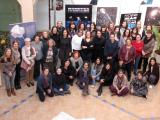
|
30/01/2018
Día Internacional de la Mujer y la Niña en la Ciencia El Instituto de Astrofísica de Andalucía se suma a la celebración del Día Internacional de la Mujer y la Niña en la Ciencia, que busca visibilizar la labor científica de las mujeres y fomentar las vocaciones en las niñas |

|
15/02/2018 - 12:30
Can CALIFA tell us something about the cosmic evolution of the star formation rate and stellar mass of the Universe? We investigate the cosmic evolution of the absolute and specific star formation rate (SFR, sSFR) of galaxies as derived from a spatially-resolved study of the stellar populations in a set of nearby galaxies from the CALIFA survey. The results show again the uniqueness of the CALIFA survey to characterize the cosmic evolution of the spatially- resolved SFR and stellar mass of galaxies. Also the success of the fossil record of the stellar... Prof. Rosa González |
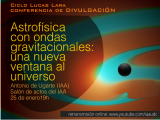
|
25/01/2018 - 19:00
Astrofísica con ondas gravitacionales: una nueva ventana al universo En 2015, después de décadas de infructuoso trabajo, tuvo lugar la primera detección de ondas gravitacionales provenientes de la fusión de dos agujeros negros, confirmando las predicciones hechas por Albert Einstein cien años atrás. En 2017 se alcanzó un nuevo hito con la observación de forma simultánea de ondas gravitacionales y electromagnéticas generadas en un mismo evento, en este caso la fusión de dos estrellas de neutrones, abriéndose así... Antonio de Ugarte |
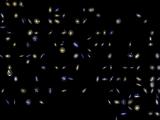
|
03/01/2018
Se desarrolla una biblioteca de historias galácticas a partir del movimiento de sus estrellas Gracias al sondeo CALIFA se han completado mapas del movimiento orbital de las estrellas de una muestra de trescientas galaxias, que constituye una información fundamental para saber cómo se formaron y evolucionaron |
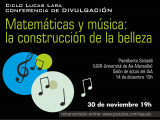
|
14/12/2017 - 19:00
Matemáticas y música: la construcción de la belleza Hablar de construcción de la belleza en música es algo natural. Sin embargo, conectar esto con las matemáticas es menos evidente. En realidad, las relaciones entre música y matemáticas son muy estrechas. Las matematicas han acompañado todo el desarrollo histórico de la teoría musical. Y las estructuras matemáticas ofrecen y han ofrecido un verdadero lenguaje para la composición musical. En esta charla veremos cómo la construcción de la belleza... Pieralberto Sicbaldi |
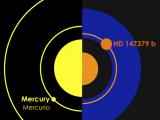
|
18/12/2017
El instrumento CARMENES descubre su primer exoplaneta Investigadores del CSIC han coliderado el hallazgo del planeta HD 147379 b, con una masa ligeramente superior a Neptuno, que orbita una estrella muy próxima |
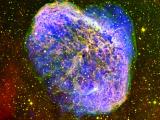
|
14/12/2017
La nebulosa creciente Una estrella masiva está expulsando materia a través de vientos rápidos, cuya interacción con eyecciones anteriores genera esta dinámica escena capturada por el telescopio XMM-Newton (ESA) |
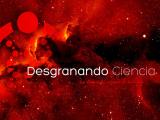
|
11/12/2017
Desgranando Ciencia IV Alrededor de 150 investigadores y expertos en divulgación científica se dan cita para explicar al público la ciencia más actual de la forma más increíble. |
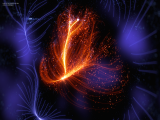
|
15/03/2018 - 12:30
Navigating the Universe : « Cosmic Flows » program I will present the evolution of the “Cosmic Flows” program spanning ten years of research since its inception in 2006. From CF1 to the latest CF3 data-set, an order of magnitude in the number of observational galaxy distances is gained, meanwhile the cosmographied volume is multiplied by 150. A theoretical framework has been developed so as to accommodate and analyze the data. This includes the Bayesian reconstruction tools of the Wiener filter... Professor Hélène Courtois |
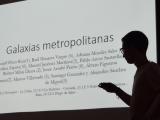
|
27/11/2017
Arranca la octava edición del proyecto PIIISA El programa PIIISA busca despertar vocaciones científicas y que los estudiantes de instituto conozcan de primera mano el método científico, trabajando en las propias instituciones y bajo la supervisión de investigadores profesionales. |

|
07/03/2018 - 12:30
Mesa redonda: "Luces y sombras en la carrera científica de las mujeres. Hacia una igualdad efectiva entre hombres y mujeres." Componentes de la mesa: Laly Gallego, contratada predoctoral Marta González, contratada postdoctoral Rosa González, primera profesora de investigación del IAA Rosa de Castro, gestora de proyectos europeos Nuria Rico, profesora de la ETS de Ingenierías Informática y de Telecomunicaciones de la UGR. Lucia Estevan, contratada FPU de la UGR y activista de la plataforma @huelga8mgranada Coordina: Isabel Márquez, vicedirectora del IAA Mesa redonda |

|
22/02/2018 - 12:30
LIGHT AND SHADOW IN THE GALACTIC CENTER The luminous S-star cluster in the Galactic center allows us to study the physics close to a super-massive black hole including distinctive dynamical tests of general relativity. Our best estimates for the mass of and the distance to Sgr A* is currently obtained using the three shortest period stars. Additionally, we aimed at a new and practical method to investigate the relativistic orbits of stars in the gravitational field near Sgr A... Prof. Andreas Eckart |

|
22/11/2017
Las superficies iluminadas artificialmente en la Tierra aumentan más de un 2% al año La contaminación lumínica, producida principalmente por el exceso de iluminación nocturna o una iluminación incorrecta, supone un derroche energético que pone en peligro la salud humana y la de los ecosistemas. Entre 2012 y 2016 la iluminación artificial nocturna ha aumentado un 9,1%, a pesar del uso de sistemas de iluminación más eficientes |

|
30/11/2017 - 19:00
Y el dolor nos cayó del cielo Recorrido histórico y alegórico del dolor, que comenzará con referencias del Génesis y culminará revisando las dolencias de los astronautas Ignacio Velázquez Rivera |
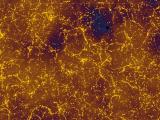
|
20/11/2017
MultiDark-Galaxies: un universo virtual de acceso libre Un equipo internacional de astrónomos ha creado un modelo teórico que permite recrear, de manera amplia y detallada, la formación y evolución del universo. El trabajo proporciona un banco de pruebas sin precedentes para las nuevas teorías sobre el cosmos |

|
25/01/2018 - 12:30
Diffuse Ionized Gas in CALIFA (and MaNGA) galaxies We use spatially resolved spectroscopy from the CALIFA survey to study the nature of the line emitting gas in galaxies of different Hubble types, focusing on the separation of star-forming (SF) regions from those better characterized as diffuse ionized gas (DIG). The diagnosis is carried out in terms of the equivalent width of Ha (W_Ha). Three nebular regimes are identified: (1) Regions where W_Ha... Dr. Roberto Cid Fernandes |
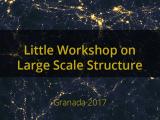
|
20/11/2017 - 24/11/2017
Little Workshop on Large Scale Structure Granada |

|
18/01/2018 - 12:30
Dust belts around Proxima Centauri. First results from a multi-department project at the IAA In this talk I will present the results of an exploratory program we carried out at the ALMA Observatory soon after the discovery of a terrestrial planet candidate in a temperate orbit around Proxima Centauri, the star closest to our Sun. Our ALMA observations reveal the presence of a belt of dust orbiting the star at distances ranging between 1 and 4 au, approximately. This dust might trace a small-scale analog to our solar system's Kuiper Belt... Dr. Guillem Anglada |

|
16/11/2017 - 12:30
Surprising characteristics of the dwarf planet Haumea revealed by a stellar occultation The solar system currently contains 8 planets and 5 dwarf planets. Among the 5 dwarf planets, 4 of them dwell in the transneptunian region, and among the transneptunian dwarf planets, the only one that remained poorly characterized was Haumea. This was because all other dwarf planets had been visited by spacecraft or had produced stellar occultations which allowed us to determine some of their basic physical properties with accuracy. The only... Dr. Jose Luis Ortíz |
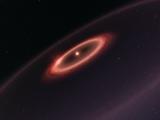
|
03/11/2017
Descubiertos los restos de la formación de un sistema planetario en torno a la estrella más cercana Nuevas observaciones, realizadas con el observatorio ALMA, revelan la presencia de polvo frío en una región que se encuentra a una distancia de la estrella Próxima Centauri de una a cuatro veces la que separa a la Tierra del Sol. Los datos también sugieren la presencia de un cinturón de polvo externo, incluso más frío, que indicaría un sistema planetario con un historial de complejas interacciones. Estas estructuras son similares a los... |

|
25/10/2017
Un nuevo avance en la determinación del tiempo de vida de las estrellas masivas El tamaño del núcleo de las estrellas determina cuánto combustible está disponible y, por lo tanto, cómo evolucionarán y cuánto durarán sus vidas |

|
16/10/2017 - 20/10/2017
Astrorob 2017 - Fifth Workshop on Robotic Autonomous Observatories Mazagón (Huelva) |

|
30/11/2017 - 12:30
GRB 170817A: a peculiar low-luminosity short gamma-ray burst associated with a NS-NS merger gravitational wave signal Short-duration gamma-ray bursts (sGRBs) have long been proposed to be produced in systems involving the coalescence of double neutron stars (NS-NS), and the observations of sGRB afterglows and host galaxies are consistent with such a conjecture. Based on the estimated event rate density derived from previously observed sGRBs at cosmological distances, the chance of detecting a sGRB within a small volume for detectable NS-NS mergers by advanced... Dr. Binbin Zhang |

|
02/11/2017 - 12:30
W170817/GRB 170817A/AT2017gfo: A Tryptich of Rosetta Stones for Compact Object Astrophysics On the 17th of August 2017, an astronomical event occurred which represents a watershed in our understanding of neutron stars. The LIGO and Virgo gravitational-wave observatories detected the first compact binary inspiral produced by two neutron stars, which was followed about two seconds later by a short GRB, labelled GRB 170817A, detected by the GBM instrument on Fermi. The detection by all three GW observatories allowed the error region to be... Dr. David Alexander Kann |
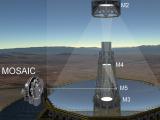
|
20/10/2017
El instrumento MOSAIC del Telescopio Extremadamente Grande (ELT): un paso gigante hacia el universo profundo Esta semana se reúnen en Toledo científicos de todo el mundo para explorar las capacidades sin precedentes del instrumento, que estudiará las primeras estructuras luminosas del universo |

|
11/01/2018 - 12:30
Dynamics and properties of gas at the Center of the Galaxy In the central parsec of the Milky Way Galaxy the environment of the super-massive black hole (SMBH) presents a complicated composition that includes a very young star cluster mixed with qby tidally stretched clouds of ionized gas (the Minispiral). The Galactic Center's inner few tens of arcseconds have been observed at high resolution with Keck for 20 years, with the primary goal of monitoring stars orbiting the SMBH. This unique baseline of... Dr. Anna Ciurlo |
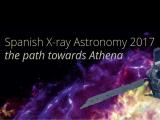
|
17/10/2017
Spanish X-ray Astronomy 2017: the path towards Athena Reunión internacional sobre astrofísica en rayos-X cuyo eje será Athena, la próxima misión de la Agencia Espacial Europea para el estudio del universo en rayos-X |
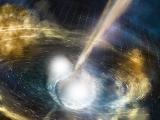
|
16/10/2017
La fusión de dos estrellas de neutrones permite el primer estudio simultáneo en luz y ondas gravitatorias Se trata de la quinta detección de ondas gravitatorias, pero la primera en la que se localiza y estudia la contrapartida en ondas electromagnéticas. Investigadores del Instituto de Astrofísica de Andalucía (IAA-CSIC) han participado en varios estudios internacionales sobre el fenómeno |

|
13/10/2017
El IAA acoge una reunión del proyecto AENEAS, para el desarrollo de una Red Europea de Centros de Datos del Square Kilometre Array El Square Kilometre Array (SKA), un radiotelescopio compuesto por miles de antenas distribuidas en Australia y Sudáfrica, será la mayor infraestructura científica jamás construida. El proyecto AENEAS busca establecer la Red Europea de Centros Regionales de SKA, un recurso esencial para que la comunidad científica pueda aprovechar el potencial científico del radiotelescopio |
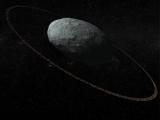
|
11/10/2017
Haumea, el más extraño de los compañeros de Plutón, tiene anillo El cinturón de objetos transneptunianos alberga cuatro planetas enanos, entre los que destaca Haumea por su forma extremadamente achatada y su rápida rotación. Una ocultación estelar ha permitido determinar las principales características físicas de este cuerpo, desconocidas hasta ahora, entre las que destaca la sorprendente presencia de un anillo |
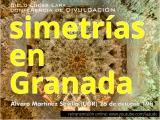
|
26/10/2017 - 19:00
Simetrías en Granada: indagando en la estructura de la belleza Las simetrías forman parte latente, y en ocasiones patente, de la naturaleza y la materia. Álvaro Martínez Sevilla |
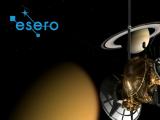
|
05/10/2017
La Agencia Espacial Europea abre en Granada una sede española del centro ESERO La Oficina Europea de Recursos para la Educación sobre el Espacio (ESERO) abre en el Parque de las Ciencias de Granada una nueva sede, que ha contado con el apoyo del Instituto de Astrofísica de Andalucía |
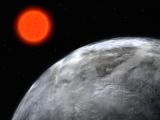
|
04/10/2017
El instrumento CARMENES demuestra su capacidad para hallar planetas similares a la Tierra CARMENES, un espectrógrafo visible e infrarrojo que opera desde el observatorio de Calar Alto (Almería), estudia una muestra de trescientas estrellas en busca de planetas similares a la Tierra. Los primeros resultados del canal visible, derivados del estudio de siete sistemas planetarios, muestran su perfecto funcionamiento |

|
19/10/2017 - 12:30
Bringing science to kids and general public at the Observatoire de la Côte d'Azur It is important to transmit the science developed in a research institution to the public. This transmission helps to increase the scientific culture of the general public, and also can help to awake scientific vocations in the kids. During this talk I will present several actions carried out at the Observatoire de la Côte d'Azur (Nice, France), to bring astronomy to the school children and also to the general public. I will talk about the... Dr. Olga Suarez |

|
26/10/2017 - 12:30
The Supernovae that Accompany Gamma-ray bursts Energetic supernovae have been seen to occur at the same spatial locations as long-duration gamma-ray bursts (GRBs). These so-called gamma-ray burst supernovae (GRB-SNe) are bright and energetic, and their spectra indicate that material within in the supernova outflow moves at tens of thousands of kilometres per second. The first GRB-SN was observed in 1998, with only 50 in the intervening years. Over the past two decades, the physical... Dr. Zach Cano |
